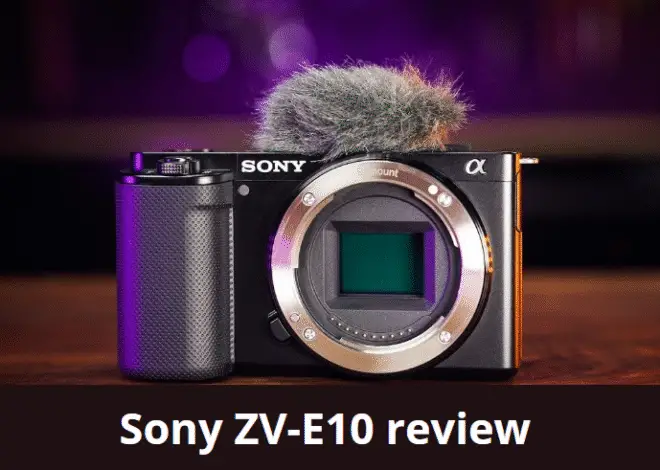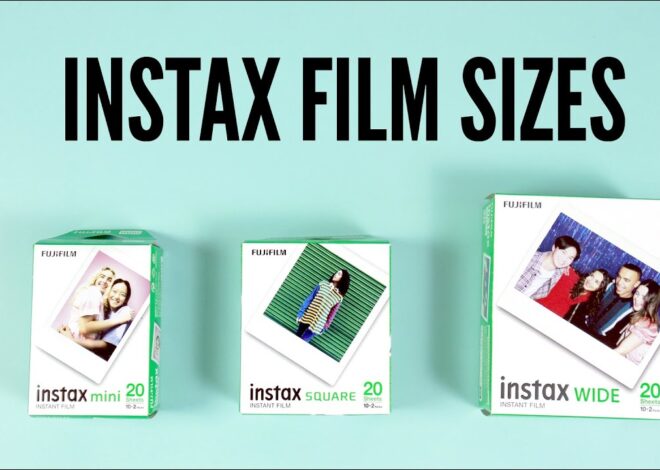
Nikon D500 vs. D7500: Which Camera Should You Go For?
As an Amazon Associate, I earn from qualifying purchases.
Nikon has been a popular brand among photographers for many years. They have produced many quality cameras that have been used by professionals and enthusiasts alike.
Two cameras in their lineup that are often compared are the Nikon D500 vs. D7500. They both are entry-level APS-C CMOS paired DSLR cameras. The D500 is on Nikon’s flagships list whereas the D7500 is an all-in-one camera.
These two cameras have many similarities and differences, and this article will compare and contrast them to show you why the Nikon D500 might be the better choice for you.
Nikon D500 vs. D7500: Quick Comparison Table
Here are some quick comparisons between the two cameras:
| Features | Nikon D7500 | Nikon D500 |
| Continuous shooting | 8.0fps continuous shooting | 10.0fps continuous shooting |
| Dimensions | 720g. 136 x 104 x 73 mm | 860g. 147 x 115 x 81 mm |
| Viewfinder Magnification | 0.63x | 0.66x |
| Number of Focus Points | 51 | 153 |
| LCD Resolution | 922k dots | 2.359m dots |
| Shutter Life Expectancy | 200000 cycles | 150000 cycles |
| Storage Slot | 1 | 2 |
| USB Version | USB 2.0 (480 Mbit/sec) | USB 3.0 (5 GBit/sec) |
| Battery Life | 950 shots | 1240 shots |
| Price | Approx. $679.00 | Approx. $1,188.00 |
What are the Differences Between Nikon D500 and D7500?
The Nikon D500 and D7500 are both powerful DSLR cameras with similar features such as:
- Sensor: Both cameras use a 20.9-megapixel APS-C sensor.
- Image processor: Both cameras use Nikon’s Expeed 5 image processor, which provides fast and accurate image processing.
- ISO sensitivity: Both cameras have a wide ISO sensitivity range of 100-51200, expandable up to 1640000 (D500) and 1,640,000 (D7500) for low-light shooting.
- Autofocus system: Both cameras have a fast and accurate autofocus system, with 153 (D500) and 51 (D7500) focus points respectively.
- Connectivity: Both cameras offer built-in Wi-Fi and Bluetooth for easy image transfer and remote control.
- Video: Both cameras can shoot 4K UHD video at up to 30 frames per second and offer advanced video features such as time-lapse and slow motion.
- Battery: Both cameras use the same EN-EL15a rechargeable lithium-ion battery.
- Size and weight: Both cameras are compact and lightweight, making them easy to carry and handle.
However, there are some key differences between the two models. The D500 is a higher-end camera, with faster continuous shooting, a larger buffer for RAW files, and a more advanced autofocus system.
Now let’s now talk briefly about the differences between the Nikon D500 and D7500:
Body and Design:

Nikon D500

Nikon D7500
Both the Nikon D500 and D7500 are DSLR cameras with a weather-sealed body that is designed to withstand the elements.
The D500 has a magnesium alloy body, while the D7500 has a body made of a combination of carbon fiber and reinforced plastic.
The D500 is a bit larger and heavier than the D7500, with dimensions of 147 x 115 x 81mm and a weight of 860g (with battery and memory card) compared to the D7500’s dimensions of 136 x 104 x 73mm and a weight of 720g (with battery and memory card).
Both cameras have a 3.2-inch LCD touchscreen that can be tilted and swiveled for better viewing angles. The D500 has a slightly higher resolution with 2.36 million dots compared to the D7500’s 922k dots. The D500 also has a built-in vertical grip, which provides better handling when shooting in portrait orientation.
The D7500 has a more traditional mode dial, while the D500 has a mode button that is used in conjunction with the front and rear dials. The D500 also has a joystick for moving the focus point, while the D7500 has a directional pad.
Both cameras have a hot shoe for attaching external flashes, and they also have built-in flash units.
Overall, the D500 has a more rugged and durable body with a larger and more comfortable grip. The D7500 is more compact and lightweight, making it more portable.
Image Quality:

(Source: YT/Robert Bishop)
Both cameras have APS-C sensors, with the D500 having a 20.9-megapixel sensor and the D7500 has a 20.7-megapixel sensor.
The D500 has a wider ISO range, with a native range of ISO 100-51,200 and an extended range of ISO 50-1,640,000.
As both cameras have the EXPEED 5 image processor, they provide fast and efficient image processing. The D500 has a faster continuous shooting speed of 10 frames per second compared to the D7500’s 8 frames per second.
The D500 also has a larger buffer, which allows for more continuous shooting before the camera slows down. The D500 can shoot up to 200 JPEGs or 79 RAW files in a single burst, while the D7500 can shoot up to 50 JPEGs or 14 RAW files.
Based on the image quality of both cameras, the D500 is the winner. There is no groundbreaking difference but being able to shoot RAW photos at such speed makes the camera stay on the professional lists.
Autofocus System:
The D500 has a better autofocus system, with 153 focus points, including 99 cross-type points.
The D7500 has 51 focus points, including 15 cross-type points.
Both cameras have phase detection autofocus, but the D500’s system is more advanced and accurate. The D500 also has a dedicated AF processor, which allows for faster and more accurate autofocus performance.
Both the D500 and D7500 have multiple autofocus modes, including single-point AF, dynamic-area AF, and group-area AF. These modes allow you to customize the autofocus system to suit your shooting needs.
The D500 has a wider range of autofocus modes than the D7500.
In addition to the standard modes, the D500 also has a 3D tracking mode, which uses the camera’s advanced metering system to track moving subjects.
The D7500 does not have this mode, but it does have a new group-area AF mode that allows you to select a group of focus points for more precise autofocus.
So, in terms of the autofocus system, the D500 outruns the D7500.
Low Light Performance:
The performance of a camera sensor in low-light conditions is an important consideration, particularly for photographers who shoot in low-light environments.
The D500 and D7500 both have good low-light performance, but the D500 has a slight edge.
The D500 has a native ISO range of 100-51,200, which can be extended up to ISO 1,640,000. The D7500 has a native ISO range of 100-51,200, which can be extended up to ISO 1,640,000 as well.
However, the D500 has slightly better noise performance at high ISO levels, thanks to its larger sensor and more advanced image processing engine.
Dynamic Range:

(Source: YT/Robert Bishop)
Dynamic range is the range of tones that a camera sensor can capture, from the darkest shadows to the brightest highlights. A higher dynamic range allows for more detail to be captured in both the shadows and highlights, resulting in a more balanced image.
The D500 and D7500 both have good dynamic ranges, but the D7500 has a slight edge. The D7500 has a dynamic range of 14.0 EV, while the D500 has a dynamic range of 14.1 EV. While this difference is minor, it can make a difference in certain situations, such as landscape photography or high-contrast scenes.
Nikon D500 or D7500: Which One to Choose, Finally?
Both the Nikon D500 and D7500 are excellent cameras, but they have different features and are designed for different types of photography.
Nikon’s flagship D500 wins in every aspect against the D7500. Now it’s up to you what you are looking for and whether you should choose it.
If you’re looking for a camera with better autofocus and speed, then the D500 is the way to go. It has a more advanced autofocus system with 153 autofocus points and a faster continuous shooting speed of 10 frames per second.
This makes it an ideal choice for sports and wildlife photography.
On the other hand, if you’re looking for a more affordable option and don’t require as advanced autofocus and speed, the D7500 is still an excellent choice. It has a smaller autofocus system with 51 autofocus points and a continuous shooting speed of 8 frames per second.
However, it has a higher resolution sensor and can shoot at a higher ISO range, making it a good option for landscape and low-light photography.
Ultimately, the choice between the Nikon D500 and D7500 will depend on your individual needs and priorities. Consider your shooting style, the type of photography and video you want to capture, and your budget when making your decision.
Regardless of which camera you choose, both the D500 and D7500 are excellent cameras that deliver high-quality results and advanced features.
- Read Also: Sony A5100 vs A6000: Which Camera Reigns Supreme?
- Read Also: Sony A6100 vs A6400: Find Out Which Camera is Right for You
- Read Also: Fujifilm X100v vs X100f: Comparing Two Top-Rated Cameras
- Read Also: Sony A7IV vs. A7RV: Features, Specifications and Differences
- Read Also: Sony A1 vs. A7R IV: Which Camera Should You Choose?



